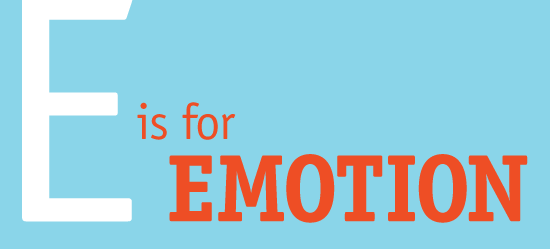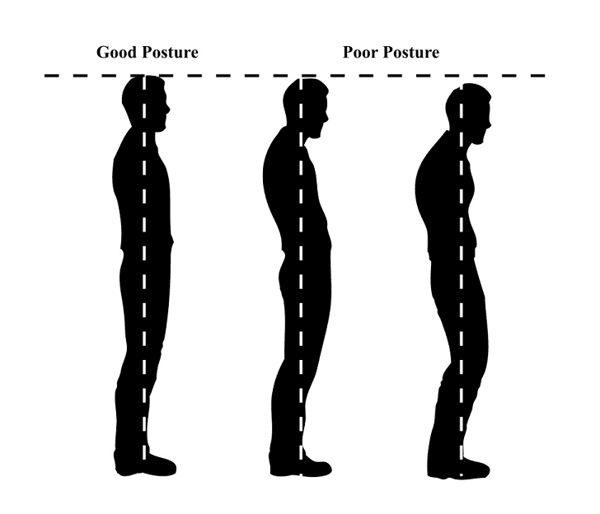- What makes a great speaker?
- How can we speak with emotion?
- Vowels help us to connect with our listeners
- Why we shouldn't drop consonants
- Speech needs emphasis, pauses and hooks
- How to communicate with finesse
- Body language signs and what they say about you
- How to improve your posture to convey confidence
- How to use hand gestures to communicate well
- What are the communication spaces?
- How do I build rapport?
- How to deliver the perfect presentation
- Good communication is about connecting
- How do I calm my nerves for a presentation?
- Bottom CTA Name
HOW TO IMPROVE YOUR COMMUNICATION SKILLS
- What makes a great speaker?
- How can we speak with emotion?
- Vowels help us to connect with our listeners
- Why we shouldn't drop consonants
- Speech needs emphasis, pauses and hooks
- How to communicate with finesse
- Your body language says a lot about you
- How do I improve my posture?
- Your hands say a lot!
- What are the communication spaces?
- How do I build rapport?
- How to deliver the perfect presentation
- How do I calm my nerves for a presentation?
- Good communication is about connecting
Download our Guide to Amazing Presentations
- Packed with 5 gems to help you make speedy improvements
- It covers the big 3 of great communication - Voice, Content and Body language
- Have simple and actionable tools up your sleeve to give your next presentation the wow-factor.
Yes, I want the guide!
By entering your email you expressly consent to receive other resources from London Speech Workshop which we hope will help you improve your communication skill and confidence.
What makes a great speaker?

A great speaker is able to captivate an audience with exciting stories through the way they speak, their use of body language and their ability to deliver a message in an authentic and compelling manner.
When we are in the throws of a great speaker we feel at ease and relaxed. We are taken on a journey as they enthral us with emotion. Essentially, we are engaged without realising. This is because a great speaker can keep our "involuntary attention".
Being a great speaker has many benefits. From your relationships to career success, both your personal and professional life will prosper as a result of becoming a charismatic speaker. So let's begin on the journey to helping you become a captivating communicator.
How can we speak with emotion?
"Key to becoming a charismatic speaker is being able to speak with emotion."
Emotion allows our message to come across with impact. Speaking with a lack of emotion results in a our listener becoming uninterested and unengaged.

"Vowels allow us to express emotion."
For babies, their very first sounds are vowel sounds. They are right at the essence of the fundamental spawning of all thought. Even animals have vowel sounds. They have screeches and wails. That’s what we need right at the beginning. It’s how we communicate our most basic survival instincts - hunger, fatigue, pain etc.

"I-O-U Emotion!"
You owe your listener a healthy does of emotion. Doing so requires you to open your mouth wide enough around the vowel sounds. This allows the sound that comes out to be unhindered. If we don't articulate vowel sounds properly we risk sounding as dead and lifeless as an old hunk of wood rather than as full and nourishing as a rose.
Vowels help us to connect with our listeners
If we open our mouth around the vowel and let out some of our feelings, then we can better connect with other people.

Try saying the following sentence for yourself with your teeth clenched firmly together:
"I am so angry right now, I am in a total rage!"
Now try saying it, with your mouth open. Can you notice the difference in feeling? The first is like you are stuck, unable to release your emotions and the second is like an outpouring of emotion.
This link between vowels and feeling shows us that how we express ourselves in the world is linked to how we feel.
Why we shouldn't drop consonants
"Consonants are about efficiency and respect of the language."

Consonants are a way of containing emotion and for finishing off your thoughts. They make things more sophisticated, they show that we respect the language.
If we drop consonants, we convey a lack of care and thought about what we are saying. It’s important to pronounce consonants, particularly the ones in a word which has vowels on either side like “butter” or the ones at the end of a sentence or a thought.
Would you like a free sample of our book?
Clear and compelling speech needs emphasis, pauses and hooks
"Emphasis shows our listener exactly what is important."
It’s important in communication to build division for your listener.

To do that, you need to direct them with your voice and with your body language to words and ideas that are important.
By using intonation, stress and pitch, we can adjust the sound of our voice to go louder, longer or higher. This allows our listener to construe which words we are emphasising and for what effect.
"Pauses help our listener follow what we are saying."
It’s important that when we speak, we’re taking regular pauses. This helps automatically break up our thoughts into smaller thoughts and smaller units of speech. As a result, our listener is better able to follow and understand what we are saying.
"Hooks show our listener we are engaged with what we are saying."
For our listener to be interested in what we are saying, we ourselves have to be interested in what we are saying. Hooks are a great way to arouse curiosity and hold our listeners engagement. That's why they are a crucial component of delivering a speech or presentation.
To incorporate hooks into your speech, consider the following:
- Describe an incident
- Ask for a show of hands
- Ask a rhetorical question
- Make a promise
- Get them laughing
- Make a provocative statement
- Cite an unusual or shocking statistic
How to communicate with finesse
"Effective communication hinges on how well you can deliver your idea."
To communicate effectively, you need to have a clear understanding of what you are saying and the most efficient way of expressing it. That can be done both with eye contact and with voice, but as well as that, a more intangible sense of intention.
"When we speak with intention we become more authentic communicators."
Speaking with intention ensures that your sound and your inflection reflects the emotional aspect of what you are saying. If you are drowning, gasping for air, you will likely scream "HELP!" You will have intention in your voice because you intend on being rescued. As a result, people around you are more likely to react to what you are saying.
"When you go up at the end of a thought, in order to finish the thought, it must come down."
Questions - go up at the end of a sentence.
e.g. "How old are you?"
Statements - go down at the end of a sentence.
e.g. "I'm thirty years old".
If we are not asking a question, it's important that we project certainty and confidence in what we are saying. We don’t get the certainty until it’s landed, and that landing is about coming down. This is known as vocal gravity.
Body language signs and what they say about you
"First impressions are absolutely crucial because people will judge you on it, often within the first seven seconds of meeting you."

Everybody knows how important first impressions are. But not everybody knows that the "first impression" is actually only a seven-second window upon first meeting someone.
So whether you’re off to an interview, you’re the keynote speaker at an event or you’ve got a first date lined up, remember that good communication is vital when it comes to making a powerful first impression.
To ensure that the judgement is a positive one, it’s important that your body language is warm, open and inviting. That means avoiding the following negative body language signals.
- Your eyes are pointing downwards or you’re not making eye contact
- Your mouth is sour or your lips are turned down
- Your mouth is just hanging open and unengaged
- Your shoulders are curved forwards
- Your chin is high or low
- Your hands are hanging by your side, or if they’re stuffed in your pockets
All of these body language signals convey a lack of confidence and care.
How to improve your posture to convey confidence
"Posture is hugely important and one inch makes all the difference."

Poor posture can project a lack of confidence. Hunching your shoulder forward, arching your back and tilting your head forwards are all signs of bad posture.
So how do you improve your posture?
- Keep your shoulders back and relaxed
- Pull in your abdomen
- Keep your feet about hip distance apart
- Balance your weight evenly on both feet
- Try not to tilt your head forward, backwards or sideways
- Keep your legs straight, but knees relaxed
"Imagine a string from the top of your head that’s pulling you upwards."
Doing this allows everything to hang in alignment. You can touch the top of your head to get that imaginary sense of string holding things upright and everything can drop from that space.
"Imagine there’s a little table under your chin."
It’s not too up and it’s not too down. It’s a little table your whole chin is balanced on and it’s facing forward. This is good posture. When you find that position, walk around in it.
"Try putting your shoulders in different positions."
First put them forward a couple of inches, and now, straighten them back, and now, try putting them way back a couple of inches. Walk around in all three positions and see what it feels like – because observing your body is the best way to get the information you need to be a great communicator.
There’s an intrinsic link between body language and first impressions, and understanding the relationship between the two is a key part of refining your communication skills.
So how can you ensure that your body speaks the language of success?
How to use hand gestures to communicate well
"Gestures allow you to highlight and underline certain concepts and ideas."
Using your hands to emphasise and illustrate your speech helps paint a picture for your listener. This allows you to connect with your listener and improve the clarity of your message.

When you want to engage your listener, avoid having your hands:
- In your pockets
- Stuck to your sides
- Behind your back
Instead, keep your hands in the performance space. This is anywhere from your belly button upwards.
Watch any great orator or TED Talk speaker, and you'll notice how much they communicate with their hands. In fact, effective use of gesture is one of the ways to speak so that people want to listen to you.
"As humans we are able to express countless emotions without saying a word."
Unlike some forms of nonverbal communication, facial expressions are universal. The facial expressions for happiness, sadness, anger, surprise, fear, and disgust are the same across cultures.
Smile and the world smiles with you
When you're making a first impression, you smile may be the very first thing a person 'hears'.
And it's often louder than the spoken word! It says ‘this person is friendly, approachable, non-threatening’. It gains the attention of others and creating the opportunity to engage your audience further with what you have to say.

Never underestimate the power of a smile - after all, you're never fully dressed without one.
When trying to make a good first impression, a smile can be the key to instantly establishing a good rapport with your listener.
It's important to consider how your eyes (and eyebrows), mouth and smile are responding to the emotion of what you are saying or listening to.
- Raising your eyebrows shows you are curious
- Opening your eyes wider shows you are speaking with intent.
- Opening your mouth wide shows you are shocked
These are just some examples of how we can use our facial expressions to reflect the emotion of what we are saying or what is being said.
"Learn from the communicators you admire."
Take anyone that you rate as a communicator and see how they use their eyes and their smile to engage.
You will find that the most captivating and charismatic communicators use a lot of facial expressions because that’s where so much of the soul happens. That’s where so much of the feeling emerges physically and therefore, it’s the way we can draw people in. It’s a way to attract and engage.
What are the connection spaces?
The Connection Spaces describe different ways of relating with people.
We will need to adopt a different mode of communication depending on the social context of the situation we find ourselves in.

What it all comes down to is using empathy to gauge which Connection space and communication style is most appropriate. Empathy inspires connection by improving the way we communicate.
Before you begin to communicate, use empathy to tune into your listeners. A large audience of soon-to-be school leavers will need a very different approach to a board of a FTSE 100 company. You might use different words, different metaphors, different examples or stories to back up your points.
Telling someone a secret or listening intently? Use The Intimate Space.
- Body language and gestures are smaller
- Eye contact is more direct
- Tone of voice is lower, quieter and more subdued
- More contained emotion
Chatting casually with friends? Use The Relaxed Space.
- Eye contact is not as concentrated/intense
- More volume, melody and colour in voice
- Gestures flow more naturally
- Relaxed body language and inclusive
Delivering a speech or presentation? Use The Performance Space.
- Speech and body language is bigger and more formal.
- Gestures are structured
- Volume of voice increased
- More pauses, emphasis and hooks
Speaking to an audience of hundreds or thousands? Use The Transformational Space.
- Everything you do must be bigger and bolder.
- Gestures more pronounced
- Everything is said with intent
By doing a few simple things with your body, your face and your hands, you can create and manage that first impression when you walk into a room. Doing so will allow you to control what people think when they see you for the first time.
How do I build rapport?
"Communication is all about building connections with people."
People have to want to listen to you not just because you’re compelling, but because they feel like you’ve got something to say.

They feel that you have values that are corresponding to theirs and that they feel open, receptive and warm to you.
"Connecting is the best reason to smile at someone."
When we smile at people genuinely we show that person that we’re interested and engaged in them. We show that we’re warm, safe and caring – caring about them and what they think about us.
|
Genuine smiles (Duchenne smile) |
Non-genuine smiles |
|
Driven by connection - similar sense of humour / values / pleasures etc Activate 47 muscles around your eyes (the entire face) - sets off chemical reactions in your brain which tells you that you’re smiling happy, to release serotonin. Doesn’t fade quickly |
Driven by an ulterior motive - social pressure, selfish gain etc.
Short lasting - lips not turned up anymore and nothing in their face or their psychology would have changed. |
"Listening is about giving people your attention fully in a moment so that they know they are the one thing occupying your mind."
The person speaking consciously or unconsciously will be aware that you’re not fully present. This could cause them to feel insecure or offended and therefore, they are likely to give up trying to engage you.
Being half-present as a listener has a reductive effect on the quality of your communication and the quality of your connection. To show that you are listening and fully present do the following:
- Direct your eye contact and open your body up to them.
- Nod and making filler sounds such as “uhm, ah, great, really,”
- Listen with your head and respond to the subtleties underneath the words.
- Smile supportively when the tone is positive
Showing sensitivity, curiosity and support to your listener will help yo to become more important in the dynamic and allow the conversation to open up to more depth. It will also encourage them to listen more attentively when it's your turn to speak.
"Smiling lifts your voice because it changes the shape of the vocal cavity in your mouth."
That's why we can tell if someone is smiling even whilst speaking to them on the phone. Starting a conversation with someone feeling good is a brilliant starting place or springboard to wonderful things communication-wise.
How to deliver the perfect presentation
"75% of people suffer from a fear of public speaking."
So if you feel this way, you're not alone. But why do we fear public speaking so much?

For many of us, being called upon to present to a room full of glaring eyes is a daunting prospect. In fact, it’s well documented that we fear giving presentations more than we do death or dying. No wonder then when we are summoned to present to a large room of people it can feel like it’s the end of the world...
There’s a lot of pressure around it because when you’re stood in a space or on a stadium or a podium with all eyes on you, it’s fundamentally an unusual and high-stakes position both psychologically and physically to be in.
A first useful step is to remember that there is rarely a rational basis for our fears. The strong fear we have around public speaking is more likely to be a leftover primitive instinct from hunter-gatherer days, when being singled out and stared at by a large group of fellow humans (especially ones you didn't know!) could easily pose a survival risk.
Obviously, standing up and speaking to a crowd - whether to ten or ten thousand - is unlikely to pose any actual risk to your survival today.
But while we can understand that on an intellectual level, the process of dismantling that evolutionary instinct on an emotional level can take a little longer.
So be patient with yourself, and use all the tools and techniques available to overcome your presentation nerves.
Good communication is about connecting
It’s much more compelling for your audience when they can feel, see and connect with you as a human being.
That’s why you want stories and you want something of you and your values in your presentation.
 In our public speaking courses, we liken planning out the content of your presentation to cooking a meal. It’s an analogy that works well and one we come back to time and again.
In our public speaking courses, we liken planning out the content of your presentation to cooking a meal. It’s an analogy that works well and one we come back to time and again.
How to prepare a speech like you're making a Sunday Roast.
- Choose 'the meat' of your recipe carefully. Think about the objective; the thing you want to achieve from your presentation, the thing you want your audience to have in their head as they leave.
- Prepare your 'healthy vegetables' by ensuring your presentation has some of your values in it, which will give it depth and make it appeal to head and heart.
- Add the 'spice' - bring personal stories into your presentation, metaphors, illustrations, that bring it to life and make it uniquely yours.
"You want a beginning, a middle and the end."
Structure is critical for taking your audience on a journey with you. It's all about presenting a situation, identifying a problem and proposing a solution.
"Deliver with pizzazz and sparkle."
Spend most of your time in the performance space but consider alternating between the relaxed, intimate and then the stronger performance space at the appropriate times. This will allow you to find different colours and shades throughout the presentation. In longer presentations, it's especially important to shake up the energy from one to another.
Use the following to colour the emotion behind your communication:
- emphasis
- pauses
- hooks
- downward inflection
- gestures
"Practise makes perfect."
If you have not rehearsed your speech you will likely fail to have sufficient focus and intent in what you are saying, partly because you yourself do not know where it is heading. Practising will set you up for success and allow you to communicate your ideas with confidence.
How do I calm my nerves before making a presentation?
"75% of people suffer from a fear of public speaking."
So if you feel this way, you're not alone. But why do we fear public speaking so much?

For many of us, being called upon to present to a room full of glaring eyes is a daunting prospect. In fact, it’s well documented that we fear giving presentations more than we do death or dying. No wonder then when we are summoned to present to a large room of people it can feel like it’s the end of the world...
There’s a lot of pressure around it because when you’re stood in a space or on a stadium or a podium with all eyes on you, it’s fundamentally an unusual and high-stakes position both psychologically and physically to be in.
A first useful step is to remember that there is rarely a rational basis for our fears. The strong fear we have around public speaking is more likely to be a leftover primitive instinct from hunter-gatherer days, when being singled out and stared at by a large group of fellow humans (especially ones you didn't know!) could easily pose a survival risk.
Obviously, standing up and speaking to a crowd - whether to ten or ten thousand - is unlikely to pose any actual risk to your survival today.
But while we can understand that on an intellectual level, the process of dismantling that evolutionary instinct on an emotional level can take a little longer.
So be patient with yourself, and use all the tools and techniques available to overcome your presentation nerves.
"When you feel the nerves inside you, label what’s going on in your body."
- Tension in my stomach
- My shoulders or back are tense
Pointing out and labelling exactly how you feel brings a more ethereal sense of fear into the here and now. As such, you’ll see it reduces it. It makes it just a thing, just a sensation.
When you come into a room with your excellent body language, your shoulders back and your head up, take a moment to connect with your audience and your listeners through eye contact, smile if you want to or feel comfortable. Essentially that moment of connecting allows for you to go, “oh, they’re just people listening to me, wanting to learn.” Remember that – just people wanting to learn what you’ve got to say.
Download our Guide to Amazing Presentations
- Packed with 5 gems to help you make speedy improvements
- It covers the big 3 of great communication - Voice, Content and Body language
- Have simple and actionable tools up your sleeve to give your next presentation the wow-factor.
Yes, I want the guide!
By entering your email you expressly consent to receive other resources from London Speech Workshop aimed at supporting you to be the best communicator you can be.


